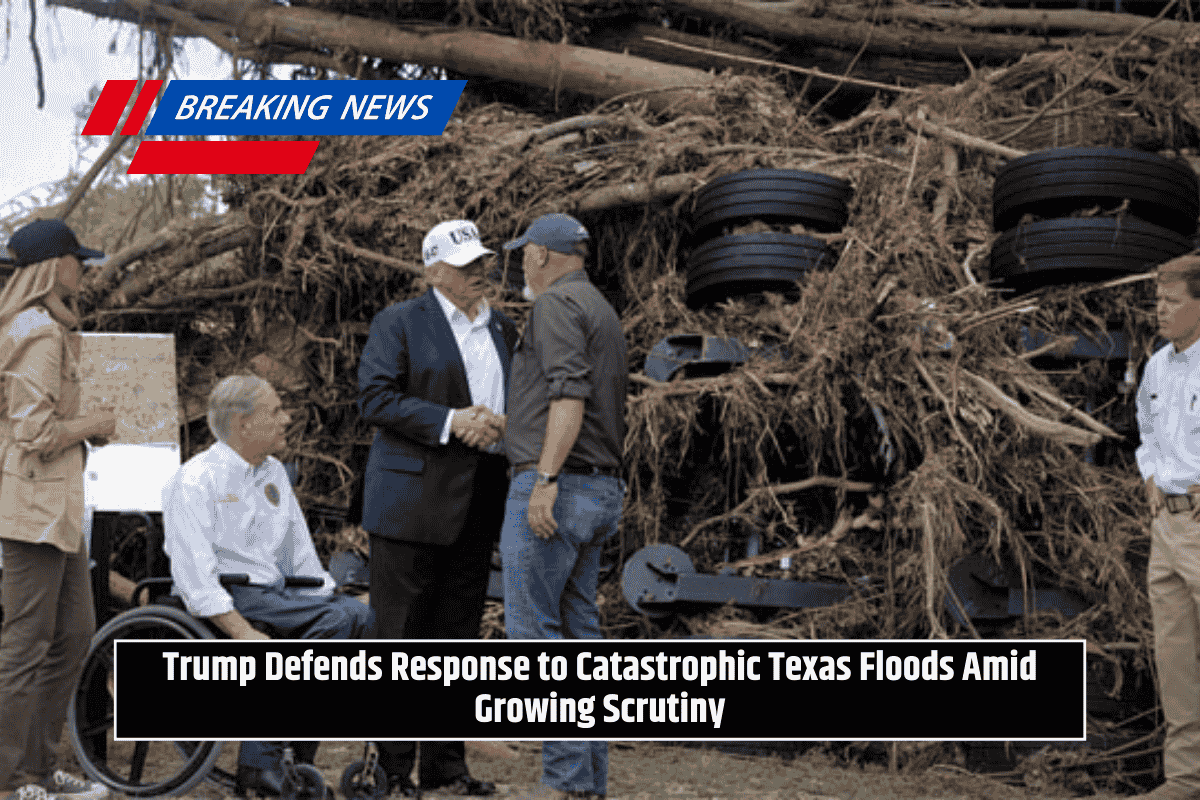US President Donald Trump visited central Texas on Friday to assess the devastation caused by catastrophic flooding over the July 4 weekend. The floods, which have claimed at least 121 lives and left more than 150 people missing, have caused widespread destruction across more than 20 counties in the state.
With the rescue operations ongoing, Trump defended his administration’s response to the disaster, which has been one of the deadliest in recent US history.
Rescue Operations and Continuing Search Efforts
Officials in Kerr County, one of the hardest-hit areas, reported that no survivors had been found since July 5. Over 2,100 personnel from local, state, and federal agencies, including teams from 20 US states, have been involved in search and recovery operations.
While President Trump commended the efforts, he acknowledged the immense scale of the destruction, describing the damage as “unbelievable” and unlike any other disaster he had witnessed.
During a roundtable briefing with local and federal officials, Trump praised the coordination of the multi-tiered response. “Trees over 100 years old have been ripped out—homes, businesses, gone overnight,” he said. “The destruction is something I’ll never forget.”
His visit aimed to highlight the swift and effective response from local, state, and federal agencies involved in the ongoing recovery efforts.
Tensions Over Delayed Alerts and Criticism
Trump’s visit, however, was marred by tense moments, particularly when he was questioned about the delayed alerts ahead of the flooding. The president responded sharply, accusing the reporter of asking an “evil” question.
Trump also lashed out at Democratic lawmakers who have criticized the federal response to the crisis, claiming that they were simply trying to criticize without offering solutions. “The public sees through it,” Trump said.
Texas Governor Greg Abbott, who joined Trump on the visit, echoed the president’s praise of the federal response, calling it “timely and effective.” Despite these assurances, growing scrutiny from lawmakers continues to cast a shadow over the administration’s handling of the crisis.
Growing Scrutiny Over Federal Response
Senate Minority Leader Chuck Schumer raised concerns earlier this week regarding potential impacts from staffing cuts at the National Weather Service, questioning whether these reductions hindered timely forecasting and early warnings for the storm.
A report by CNN also alleged that FEMA teams were delayed by over 72 hours due to new spending approval procedures introduced under the Trump administration, possibly delaying early response efforts.
A group of House Democrats has sent a letter to FEMA and the National Weather Service, calling the situation an “unforced disaster” and urging for congressional hearings on how the crisis was handled.
This criticism mirrors past political clashes over natural disaster responses, particularly during Trump’s 2024 campaign when he criticized the Biden administration’s response to flooding in September.
Economic Impact and Recovery Challenges
As recovery efforts continue, the economic damage from the flooding is expected to be significant. Preliminary assessments from AccuWeather estimate the Texas floods could cause economic losses between $18 billion and $22 billion.
The flood’s aftermath presents a monumental task for the state’s residents, many of whom are now faced with the challenge of rebuilding entire communities devastated by the disaster.
